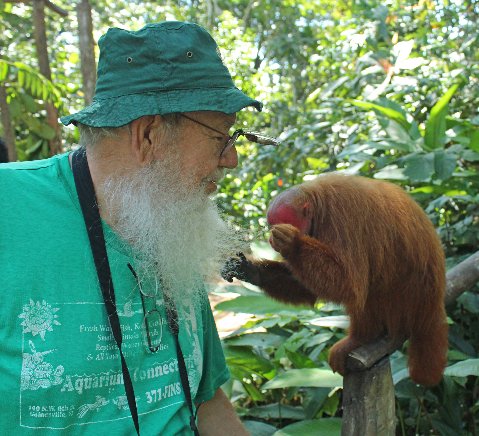Although they were long considered a subspecies of the European four-lined rat snake, the Bulgariian rat snake is now considered a full species.
My Bulgarian rat snakes are just about three years old now, and three-and-a-half feet in length. I expect they will eventually attain a length of five feet.

I haven’t tried to push the growth of these rather heavy bodied snakes and they are, apparently, a normally slow growing taxon. Of the twospecies of the genus Elaphe, in Europe, the Bulgarian (also called the Eastern European or blotched rat snake
E. sauromates) is the less colorful and undergoes the fewest ontogenetic color and pattern changes. In fact, when discussed, it is often said that this species retains its juvenile color and pattern, this being numerous dark olive gray to charcoal blotches against a ground color of straw yellow to olive. The head bears a dark "V," point forward. It is an attractive snake but is in no way flamboyant.
They are nervous snakes (and were especially so as hatchlings), but in the time I have had them neither male nor female have made any effort to bite. Neither are they confident enough of my occasional overtures to accept thawed mice from my hands. But both eat readily when each is gently moved to its own five gallon bucket containing the proffered meal, this now consisting of two extra large mice given at seven to 10 day intervals.
Bulgarian rat snakes have a reputation for being difficult to breed in captivity even when offered a three to four month period of hibernation. Although I am not altogether sure the snakes are quite big enough, I hope next spring, that if they are sexually mature, to to prove this wrong. The hibernaculum is ready and waiting and the snakes seem suitably heavy and very healthy. Wish us luck with this.
More photos under the jump...
The pattern of this juvenile Bulgarian rat snake will not change appreciably with advancing age:

A two-year-old Bulgarian rat snake:

 Author, photographer, and columnist Richard Bartlett is one of the most prolific writers on herpetological subjects in the 20th century. With hundreds of books and articles to their credit, Richard and his wife Pat have spent over four decades documenting reptiles both in the field and in captivity. For a list of their current titles, please visit their page in our bookstore. Author, photographer, and columnist Richard Bartlett is one of the most prolific writers on herpetological subjects in the 20th century. With hundreds of books and articles to their credit, Richard and his wife Pat have spent over four decades documenting reptiles both in the field and in captivity. For a list of their current titles, please visit their page in our bookstore. |




To prevent automated Bots from commentspamming, please enter the string you see in the image below in the appropriate input box. Your comment will only be submitted if the strings match. Please ensure that your browser supports and accepts cookies, or your comment cannot be verified correctly.